MARKET OVERVIEW
The global photovoltaic market has made its way progressively into the larger energy sector, beyond traditional limits, into an era of exploration, experimentation, and expansion. Although significant thought has been given to its current-day statistics and technology level, the future holds much more than solar panels and efficiency rates. The path on which this market will proceed is not only about increasing production or achieving energy goals. It will be a tale of influence how this technology will influence societies, economies, and ecosystems in unimagined ways.
While the new global alignment ravenously defines the future of energy security, the global photovoltaic market will be at the forefront of dynamics and infrastructure changes. In the future, it will no longer be limited to roofs or solar fields in remote areas. Photovoltaic techniques will be integrated into urban and rural development fabrics, which will have to change the way of production, distribution and use of cities. From rowed highways with solar panels to self-sufficient off-grid settlements, photovoltaic system access to architectural designs, public infrastructure and transport systems will go.
Economically, the global photovoltaic market will herald a redistribution of power literally and metaphorically. Countries hitherto reliant on energy imports can become pioneers in solar deployment, with whole economies shifting towards solar exports, technology licensing, and knowledge sharing. Traditional financial players will start designing new models of investments based less on fossil-driven portfolios and more on decentralized energy grids fueled by sunlight. Financial access will no longer be an issue, as creative pricing models and micro-investments will make photovoltaic products accessible even to the most marginalized communities.
The global photovoltaic market supply chain will also undergo change. Advances in materials science will unsettle silicon-based cell dominance, placing alternatives that are lighter, more flexible, and easier to manufacture environmentally in the spotlight. This transition will create space for new players, ranging from technology start-ups to makers of materials, changing the competitive dynamics. Additionally, recycling and reuse of old panels will not only be an environmental issue it will become a secondary market that feeds jobs and sustainability.
Aside from technology and business, the global photovoltaic market cultural impact will increase. Solar power will be not only an answer in future climate resilience and sustainable living stories but a symbol. It will find reflection in school curricula, community identities, and national branding campaigns. What it means to be progressive will be connected to how much a society can produce energy cleanly and autonomously.
In summary, the global photovoltaic market will go beyond its present definitions and adopt a multi-dimensional position in shaping the future. Its growth will be quantified not only by rates of installation or reductions in cost, but by the degree of integration into human experience how humans live, move, work, and dream. This future will not be limited by technical performance but will be framed by the ability to influence long-term change.
Global photovoltaic market is estimated to reach $524.9 Million by 2032; growing at a CAGR of 10.2% from 2025 to 2032.
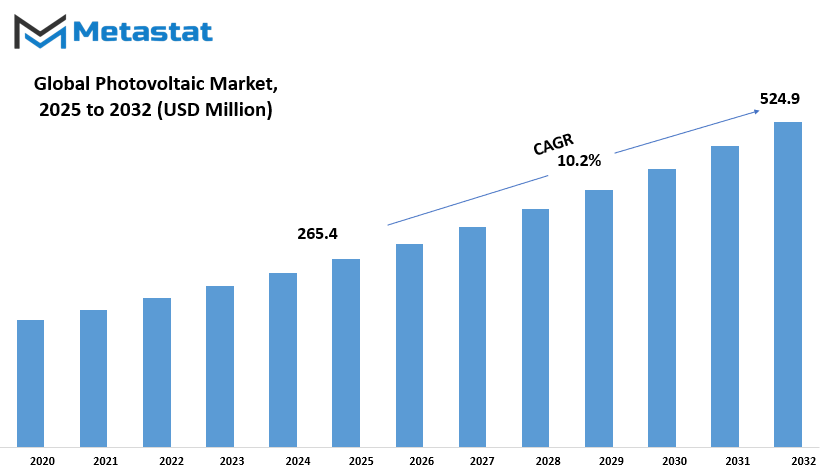
GROWTH FACTORS
The global photovoltaic market will remain in the spotlight as the world turns increasingly towards clean energy solutions. The individuals are seriously looking for an option with a lower environmental footprint, and solar energy is an option that shines because it becomes renewable, noise-free and more inexpensive. Governments around the world are implementing policies and incentives to promote solar uplift, which is more convenient to invest for both individuals and enterprises.
This support has been transformed into a forced drive for market development, especially the issues of climate change grow worldwide. However, practical barriers remain, to what extent solar energy can progress. A major challenge is the cost of installing and running the photovoltaic system. Although the cost has decreased over the years, they are still beyond the reach of many, especially in poor or rural areas. In addition, solar panels do not work even at all places. They depend a lot on the sun, so where the cloud cover is a common or slightly open space, they do not work efficiently.
These factors discourage individuals, even if they are interested in converting to solar. In addition, new opportunities will arise as technology advances. Efforts to increase the performance of panels, reduce their size and make them more durable will make solar a choice for more individuals in the long run. Innovations such as solar tiles, thin-film panels and increased storage will also contribute to make the system more efficient and convenient. Additionally, developing areas with emerging nation and growing power needs are not only adopting solar energy as a fashion, but also as a requirement. These areas have a high capacity of market development over the next few years, especially where traditional energy sources are rare or uncertain.
The global photovoltaic market, aided by policy, motivated by need, and led by innovation, will continue to advance. While it has some challenges today, its outlook is bright as individuals and industries increasingly make more considered energy decisions.
MARKET SEGMENTATION
By Component
The global photovoltaic market is steadily revolutionizing how the world looks at energy. Rather than depending on conventional, non-renewable sources, people and companies are becoming more and more reliant on the sun. At the heart of this movement is an interconnected web of parts that go hand-in-hand to harness sunlight and turn it into electricity and make it functional. The component segment of this market comprises Solar Panels, Charge Controllers, Batteries, Inverters, and other ancillary parts, all crucial to the performance and reliability of the system.
Solar panels are a beak of solar energy - these are the first things that most people think when they think of solar energy. Solar panels assemble sunlight and turn it into direct current (DC) electricity. However, it is not immediately useful in most homes or businesses. Inverters come to the rescue. They take DC electricity and turn it into alternative current, or AC, which is the form of electricity found in everyday life. If it was not for the inverter, the solar panel power would not be compatible with everyday equipment or power grid.
The charge controller is the patron of the system. Their role is how electricity is directed from solar panels to batteries so that it is not overcharged or damaged. This role is particularly important in sunny places, where overcharging can result in less battery life. On the other hand, the battery is used to store the energy produced during the day so that it can be used later, especially when the sun is not out. It supplies reserved energy backup power and makes electricity accessible even during sunset or cloud days.
Other elements are categorized in the "Others" category, such as mounting structures, wires, and connectors items which might not be as apparent but which are still essential to a running and secure solar power system. Without them, even the finest solar panels or inverters would not function as intended.
As solar energy increases its notch worldwide, each of these elements will become more important. From bringing clean energy to enable energy self -sufficiency in rural villages, the global photovoltaic market will rely on the smooth interaction of these factors. Better performance, more durable systems and inexpensive solutions will decide how these components are designed and enhanced in the future.
By Grid Type
The global photovoltaic market keeps changing in relation to new energy needs and evolving priorities globally. As countries pledge to curtail carbon emissions and adopt more environmentally friendly solutions, solar energy has become a focal point. In this arena, how the energy is linked remains vital. In terms of grid type, the global photovoltaic market is divided into On-Grid and Off-Grid systems. Of these, On-Grid installations represent $229.0 million, the prevalence of which is indicative of their common usage in regions of established infrastructure.
They are plugged directly into the public electricity grid, making it possible for energy distribution as well as excess exchange with providers. Their usage tends to coincide with urban sprawl, industrial applications, and government-driven solar efforts through encouraging grid-based installations for easier access.
On the other hand, Off-Grid systems gain prominence in regions with an unreliable power supply. Off-Grid systems work autonomously, saving energy produced to be utilized subsequently, making them accessible for distant areas or areas where grid connectivity is not viable or restricted. With the increasing requirement of decentralized solutions, especially in developing countries or disaster regions, the off-grid system is expected to attract more attention.
They can be used to give strength to important features, small enterprises and homes that are unable to rely on traditional grids. While their market value falls behind today, their ability to work independently and offer flexibility provides space for development over the next few years.
Together, these two types of grids determine the use of solar energy and the way the world is used worldwide. With the increasing demand for technology and increasing demand for energy, the ratio will continue to change the ratio between the on-grid and off-grid systems, opening new paradigms in the production, storage and use of photovoltaic energy.
|
Forecast Period |
2025-2032 |
|
Market Size in 2025 |
$265.4 million |
|
Market Size by 2032 |
$524.9 Million |
|
Growth Rate from 2025 to 2032 |
10.2% |
|
Base Year |
2024 |
|
Regions Covered |
North America, Europe, Asia-Pacific, South America, Middle East & Africa |
By Deployment Type
The global photovoltaic market is defining the energy usage of the future, and its types of deployment are leading the way in terms of how solar power will be employed in different environments. Utility-scale PV plants will remain significant, especially in addressing the increasing need for major energy supply. These PV plants are generally constructed over expansive areas of land and are intended to directly feed into national grids. Due to their size, they tend to be selected by governments or companies with private investment intent to provide electricity to whole cities or regions.
Meanwhile, industrial and commercial sun PV structures turns into an increasing number of regularly occurring among companies searching for to decrease their dependency on conventional kinds of strength. Manufacturing corporations, warehouses, and stores will invest in solar installations, not best to save cash but to acquire sustainability targets. Such structures will typically be set up on rooftops or embedded in constructing structures, presenting economic and environmental blessings.
Residential sun PV structures will boom in demand with owners trying to be loose from the volatility of energy prices. With developing consciousness of easy energy, people will more and more use solar panels as an funding alternative. Government subsidies and declining set up costs will make sure those systems emerge as low cost for plenty, permitting homes to be part of the strength shift whilst reducing their payments.
Collectively, the 3 deployment types Utility-Scale, Commercial and Industrial, and Residential may be the defining component in the route of the global photovoltaic market. Each kind exists to satisfy a specific want, but all are united in a common fashion in the direction of purifier, extra steady sources of power. As the technology maintains to develop and adoption grows, the sun destiny might be inspired via how those systems are designed, constructed, and integrated into day by day lifestyles.
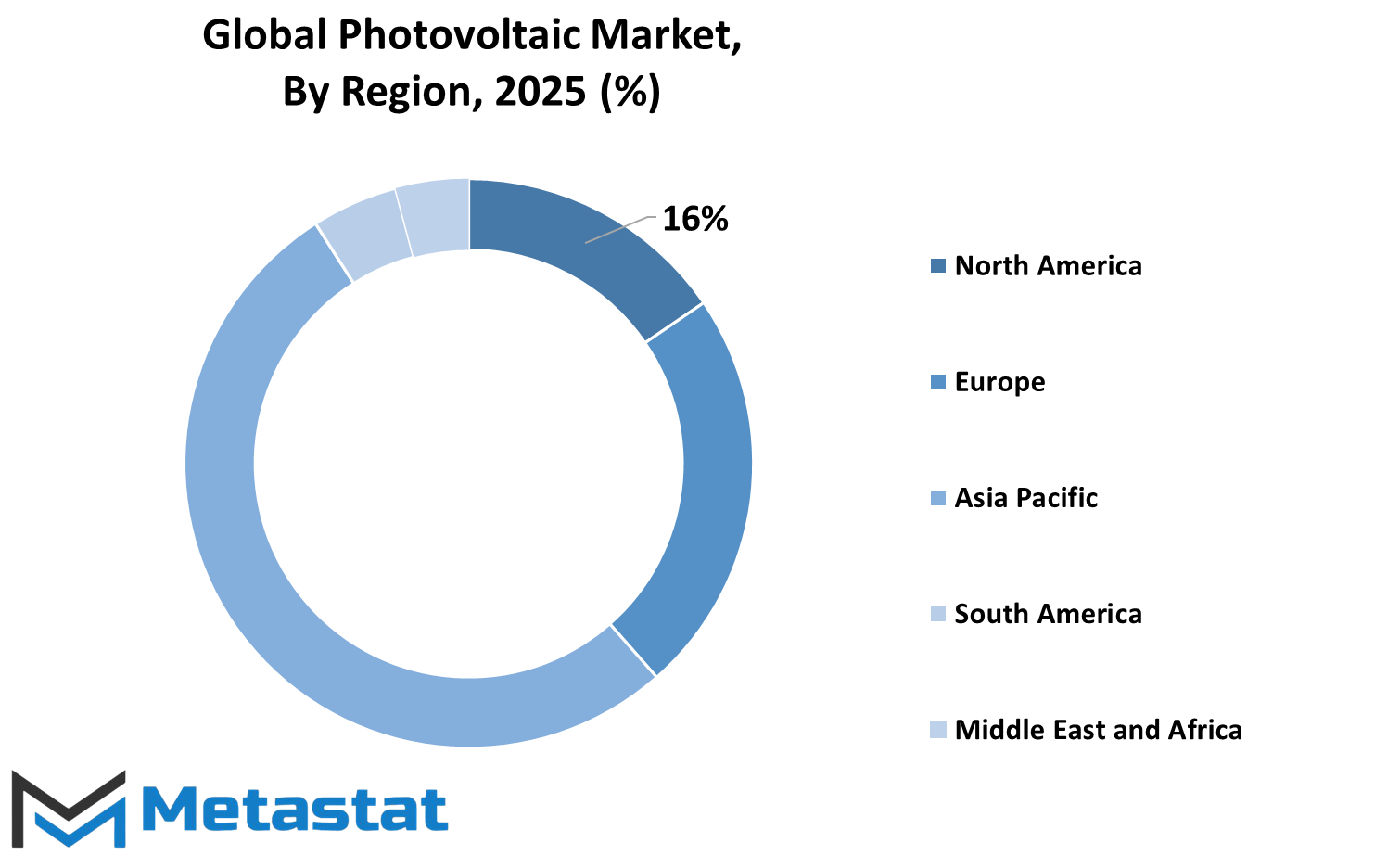
COMPETITIVE PLAYERS
The global photovoltaic market is influenced by its far-reaching presence across different continents, indicating divergent regional advances and policy orientations. Geographically, it is segmented into North America, Europe, Asia-Pacific, South America, and the Middle East & Africa. North America is also segmented into the U.S., Canada, and Mexico. In Europe, the photovoltaic market comprises the UK, Germany, France, Italy, and the Rest of Europe. The Asia-Pacific region consists of India, China, Japan, South Korea, and the Rest of Asia-Pacific. It includes Brazil, Argentina, and the Rest of South America. The Middle East & Africa is structured as GCC Countries, Egypt, South Africa, and the Rest of Middle East & Africa.
Each region has its own strategy with solar energy. Some regions are racing ahead with investments in solar infrastructure, while others are gradually closing the gap through fresh policies and local collaboration. For instance, nations like China and India will continue to raise their output in the next few years given that their population and energy needs are expanding. Other countries like Germany and the U.S. are improving their current systems, relying more on innovation and efficiency.
What is fascinating about the world's topology of photovoltaic use is the way in which every area is so different in how they address energy demand. Some are working to replace obsolete power networks, and some are seeking to illuminate underserved locations. This results in varying strategies, such as solar rooftop installations in urban areas or vast solar farms in rural areas.
And there's an obvious trend in most nations to encourage locally manufactured solar panels. This strategy not only has the goal of keeping costs down but also keeps a nation from being reliant on foreign suppliers. At the same time, government incentives and policy shifts will likely have a significant hand in determining how quickly various regions of the globe increase their solar capacity.
As more nations seek cleaner energy solutions, the future for the global photovoltaic market appears to be headed in different directions. Some will chart their course through technological advancements, while others will focus on energy affordability and access. Combined, they will drive a global transformation, where actions at a regional level feed into a wider change in powering the world.
Photovoltaic Market Key Segments:
By Component
- Solar Panels
- Charge Controllers
- Batteries
- Inverters
- Others
By Grid Type
- On-Grid
- Off-Grid
By Deployment Type
- Utility-Scale PV Systems
- Commercial and Industrial (C&I) PV Systems
- Residential PV Systems
Key Global Photovoltaic Industry Players
- Tongwei Solar (TW-Solar)
- JA SOLAR Technology Co.,Ltd.
- LONGi Solar
- Jinko Solar Co., Ltd.
- Trina Solar
- Canadian Solar Inc.
- First Solar Inc.
- Hanwha Qcells
- Risen Energy Co., Ltd
- SunPower Corporation
- Yingli Solar
- Wuxi Suntech Power Co., Ltd.
WHAT REPORT PROVIDES
- Full in-depth analysis of the parent Industry
- Important changes in market and its dynamics
- Segmentation details of the market
- Former, on-going, and projected market analysis in terms of volume and value
- Assessment of niche industry developments
- Market share analysis
- Key strategies of major players
- Emerging segments and regional growth potential



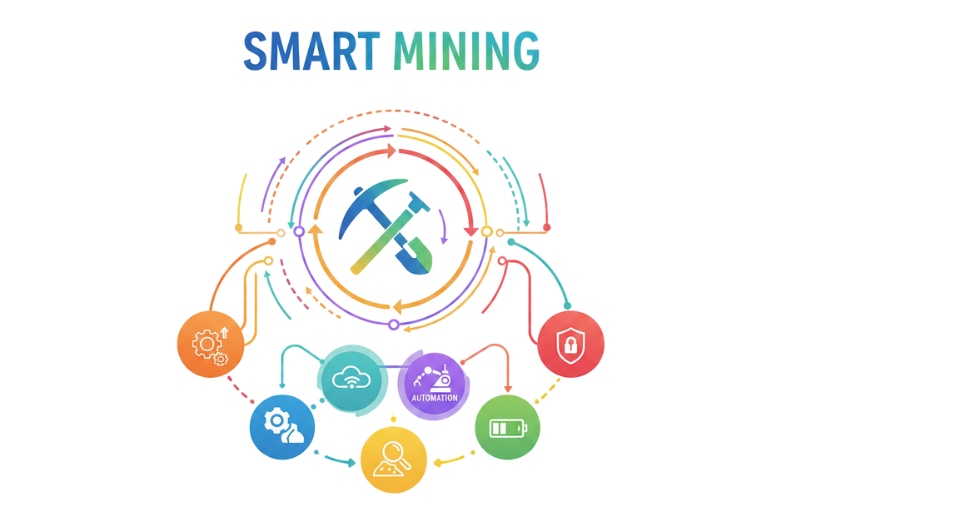
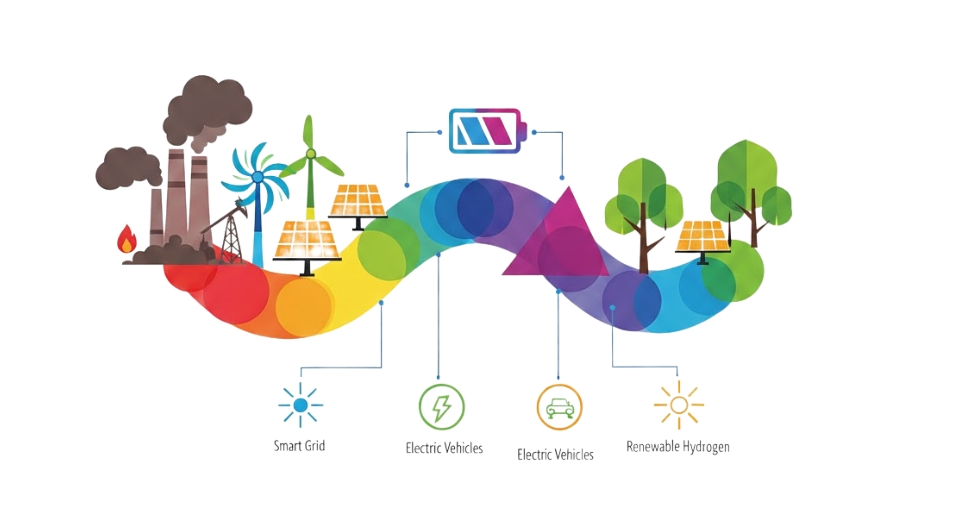

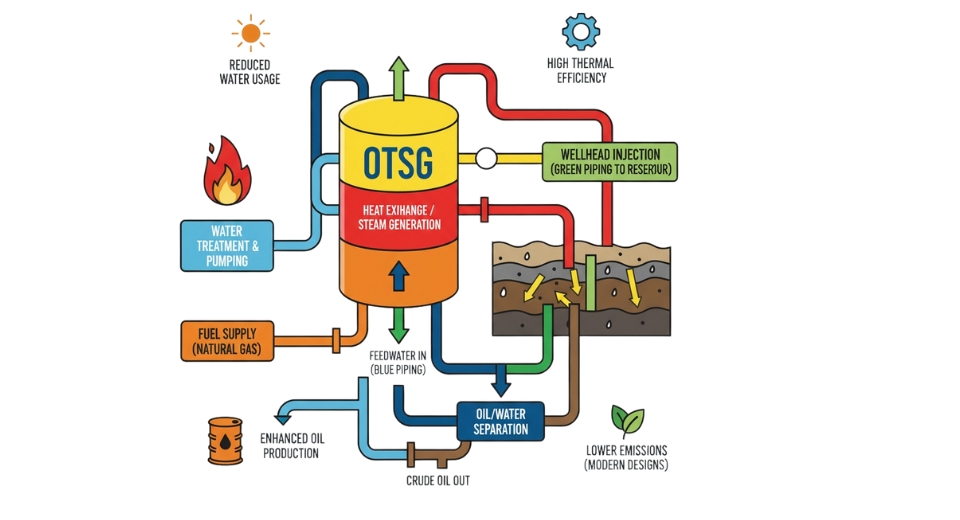

 US: +1 3023308252
US: +1 3023308252






